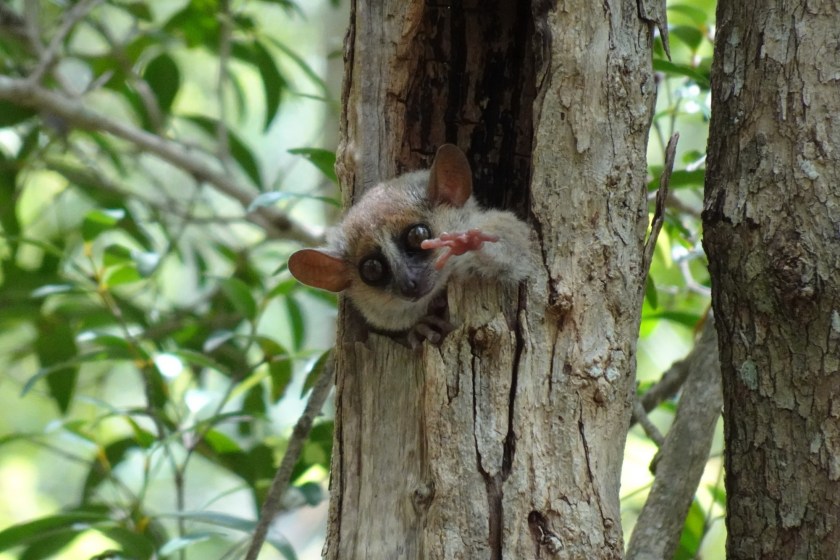The prime tourist draw on the central west coast of Madagascar is “The Avenue of the Baobabs.” The baobab tree grows in Africa and Australia also, but Madagascar is the hotbed of baobab excitement, home to 6 of the 9 species. Baobabs have thick trunks filled with spongy fibrous wood that can store water through long dry seasons. The stored water is also useful for humans – we often saw holes cut in their trunks where people had tapped the water over the centuries for drinking water.

A large baobab is centuries old. They only grow a tiny amount each year in the harsh climate. We saw 10 year old “seedlings” that could have auditioned for the role of Charlie Brown’s Christmas Tree. Most of the trees you see pictured below are several hundred years old, some over a thousand years. While it looks like the trees were planted along the Avenue, the trees were there long before and the road built between them.
(Note that we’ve changed a bit how the photo galleries work compared to the last posts. From now on, the picture captions won’t appear until you click the thumbnail. That way the text doesn’t obscure the photo).
The baobabs were pretty, otherworldly and impressive but it was so hot there (over 100 degrees) that we didn’t stay long. And we were itching to get through the Avenue to our next destination, Kirindy Forest Reserve, where we hoped to see wild lemurs. Lemurs have traditionally been referred to as “the most primitive primates” but I don’t know if modern evolutionary biologists would be so judgmental. More scientifically, we’d call them “the most cute primates.” They only live in Madagascar (and a few nearby islands) and come in several shapes and sizes – filling many of the ecological niches occupied by other mammals elsewhere.
It was a two hour drive to reach Kirindy, down one of the roughest roads we’ve been on — deeply pot-holed and partially flooded by recent rains. A jeep ahead of us got stuck in the mud but our driver somehow maneuvered his way through the muck and we got quite a workout bracing ourselves against the bumps and lurches. But in the end we were well rewarded, seeing many lemurs of different species, quite close up. Including the elusive tiny “mouse lemur” which is normally nocturnal but for some reason decided to put on a sleepy little show for us.

We’ve also taken video on the trip but haven’t figured out how to embed them in the blog like the photos. When you click on a video, it will take you away from our page and you’ll have to use your browser’s back-button to return here. For your additional time-wasting pleasure we have:
- Driving down the street in Morondava, the main town in west-central Madagascar, showing all the activity along the way. You may notice a lot of orange t-shirts. We arrived just after a presidential election and many people were wearing the t-shirts given out free by the eventual winning candidate.
- Here’s a video to give you a nauseating taste of the rough road to Kirindy.
- You may feel like you’ve filled your lemur quota for the day, but you haven’t seen the definition of cute until you click on this video of our sleepy mouse lemur.
- These rough-housing sifakas (that’s what the white lemurs are called) are pretty adorable too.






































